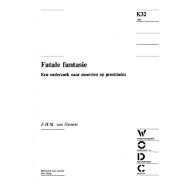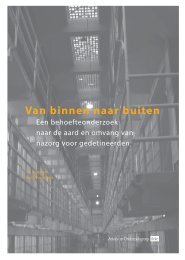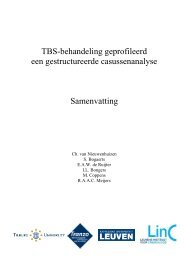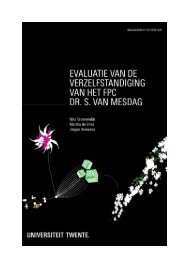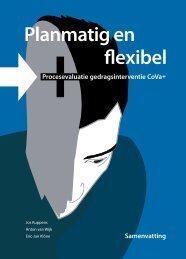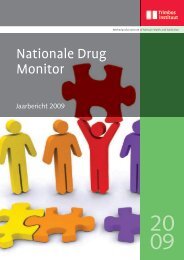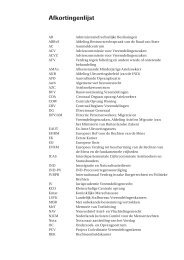Tienerseks; vormen van instrumentele seks onder tieners - WODC
Tienerseks; vormen van instrumentele seks onder tieners - WODC
Tienerseks; vormen van instrumentele seks onder tieners - WODC
Create successful ePaper yourself
Turn your PDF publications into a flip-book with our unique Google optimized e-Paper software.
SUMMARYEarly 2007 the <strong>WODC</strong> (the Research and Documentation Centre of the Dutch Ministry ofJustice) commissioned the Rutgers Nisso Groep (RNG) to investigate the nature, scope andrisks of instrumental forms of teenage sex. The primary motivation for these kinds of sexualbehaviour does not seem to be the development of a relationship and intimacy, but purelysexual gratification or material gain. Such sexual behaviour includes casual sex, sex inexchange for money or something else, and participating in sex parties or Internet sex. Theprimary research method employed was a review of the available literature on the subject.Additional data were obtained from a meeting with field experts and from secondary analysesof the data base of a previously conducted, large-scale and representative research amongyoung people between the ages of 12 and 25 (Sex under 25). Below you will find thequestions included in this research and a summary of the findings.1) What is the nature and scope of sexual behaviour of young people that is not focused onthe development of a relationship or intimacy, but on sexual gratification or material gain? Isthere a higher incidence of such behaviour among specific groups of youth (characterised bydemographic characteristics, background or street culture)? In which way and in whichcontexts does such behaviour come about?Casual sex among young people is fairly common. Almost one in five sexually active Dutchyouth did not have a relationship with the last partner they had sexual intercourse with.Internet sex is not uncommon either: about one in ten boys and one in twenty girls say theyhave experienced cyber sex in the past six months. What they did exactly is unknown; itrelates to all behaviours that were mentioned as such by the youth themselves. Sex inexchange for money or another reward appears to occur among a very small minority withinthe total population of youth, although we do not have Dutch statistics relating to sex parties.On the basis of literature, discussions with experts and secondary analyses, we candistinguish groups in which forms of instrumental sex appear to occur more frequently.Firstly, this behaviour appears to occur more frequently in large cities. The secondaryanalyses show that young people in highly urbanised areas relatively often have sex inexchange for money or sex with casual partners and think more permissively about sexwithout any emotional involvement. A study in southeast Amsterdam also finds that sex inexchange for a reward and participation in sex parties occurs not infrequently, althoughanother observation is that it exceeds the city (district) boundaries.With regard to boys, the group between the ages of 12 and 14 appears to have a more positiveattitude towards forms of instrumental sex: their last partner was more often a casual partner,they think more positively about sex without being emotionally involved and relatively oftensay that it is alright for a boy to expect sex in certain situations (for example, if a girl has theimage of being “easy”). Furthermore, homeless youth and youth with mental problems, e.g.young people who are depressed or addicted, more frequently have sex in exchange formoney or another reward. Young people with higher scores on depression more frequently



